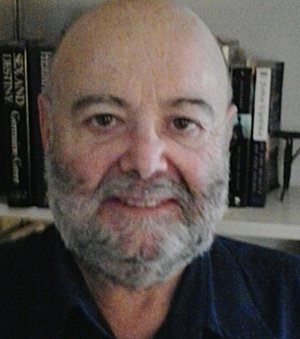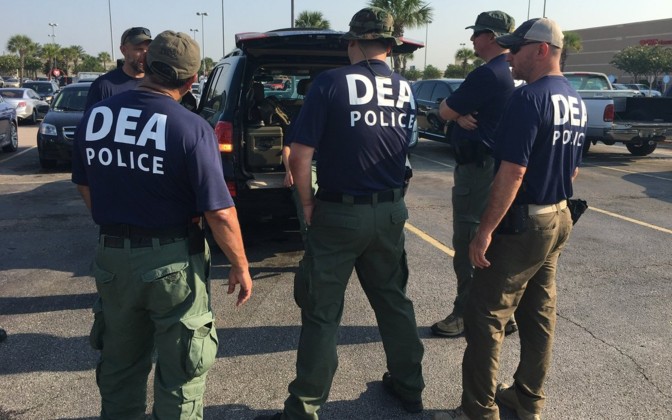Audit Details Misuse of Funds at U.S. Pain Foundation
/By Pat Anson, PNN Editor
It’s been over a year since serious “financial irregularities” were uncovered at the U.S. Pain Foundation and former CEO Paul Gileno was forced to resign under pressure. But the Connecticut based non-profit is still dealing with legal and financial fallout from years of nepotism, self-dealing and lax oversight by its management and board of directors under Gileno’s leadership.
A newly released audit of U.S. Pain and its 2018 tax return indicate that Gileno misappropriated over $2,055,000 from the charity from 2016 to 2018. The board did not discover the financial irregularities until April 2018, when it hired an auditor and attorney to investigate.
‘The findings were clear that the former president had engaged in unauthorized transactions involving the misuse of assets of the organization. The Board demanded and received the former CEO’s immediate resignation on May 29, 2018, and shortly thereafter reported the matter to federal authorities,” the audit states. “The criminal investigation is still ongoing into the former president’s activities.”
In addition to the federal investigation, PNN has learned that the Connecticut Attorney General’s office is planning to seek a court order to prohibit Gileno from ever handling charitable funds again.
U.S. Pain is providing few details on how Gileno was able to misappropriate over $2 million from the charity over a three year period. The misused funds were reported to the IRS as “excess benefit transactions,” a broad category that includes unauthorized compensation, reimbursement for Gileno’s personal expenses, and payments to Gileno’s family members for unspecified work.
In addition to the $32,537 that Gileno received in wages for roughly five months of work in 2018, he collected over $166,000 in excess benefits last year. The latter amount includes a $36,000 payment to an unidentified company owned by Gileno. It is not clear what the payment was for.
PAUL GILENO
Gileno’s wife, sister and step-daughter were also on the charity’s payroll, collecting nearly $71,000 in wages in 2018. It is not clear what work they did. Gileno’s sister also received an unspecified amount of severance pay and maternity leave, according to the tax return.
The auditor also reported that U.S. Pain has been unable to recover any money from a $100,000 investment in SMJ Homes, a real estate business owned by Gileno’s brothers. A promissory note from the company was due in February 2019, but has not be repaid.
Poor Business Decisions
In addition to the questionable payments to Gileno and his family, the audit and tax return show that U.S. Pain entered into a series of poor business decisions.
In 2016, U.S. Pain launched an “unrelated bakery business” that Gileno, a former caterer, established to “further the general mission” of the charity. Nothing in U.S. Pain’s mission statement says anything about a bakery.
The bakery was unprofitable from the start, reporting a net loss of nearly $70,000 in 2017. The board voted to liquidate the business last year at a cost of over $72,000 and recently agreed to pay another $23,900 to settle lease obligations for the bakery. In all, over $165,000 in charitable funds were wasted on the failed enterprise.
After Gileno’s departure, the board agreed to forfeit a non-refundable deposit of $50,000 that Gileno authorized in a failed attempt to purchase PainPathways magazine.
The board also scrapped a $2.5 million prescription co-pay program with Insys Therapeutics, a controversial drug maker whose founder and four former executives were recently convicted of racketeering. U.S. Pain said it would no longer accept funding from Insys, but rather than return leftover funds the board has kept $200,000 from the company in an escrow account.
Dealing with all of these legal and financial issues has been costly. According to its tax return, U.S. Pain paid nearly $514,000 for legal services, accounting and penalties in 2018 — nearly a quarter of its revenue for the year.
Gileno: “I Never Misled Them”
How could the self-dealing and financial irregularities go undetected for so long? Interim CEO and board chair Nicole Hemmenway said in a statement last December that Gileno “repeatedly misled and concealed information from the Board of Directors and staff.”
But Gileno, who has admitted taking money from U.S. Pain for his own personal use, maintains that he kept the board informed. “I never misled them. They were part of U.S. Pain for over 10 years and I talked with them daily. Nicole and I were close like a brother and sister and I never hid one thing,” Gileno told PNN last year.
Gileno did not respond to a request for comment for this story. Neither did Hemmenway. A spokesperson for U.S. Pain said in an email the tax return and audit “constitutes our public statements on these matters.”
The charity’s 2018 tax return was filed on time, but its 2016 and 2017 returns were delinquent and filed late in 2018. They indicate there was no real oversight of Gileno by the board until last year.
“The former President/CEO controlled the board process. The records maintained under his leadership list the officers and directors… but contain no evidence that election of officers and directors occurred,” the tax returns said.
The audit indicates that U.S Pain “rents its main office from the father in law of an employee” who is not identified. Public records for the city of Middletown, CT indicate the building is owned by Ottavio Monarca, who is the father-in-law of Lori Monarca, U.S. Pain’s Executive Office Manager. Rent of $25,000 was paid for the office in 2018 and the lease continues until 2020.
Hemmenway was paid a salary of $71,750 in 2018. The other two board members, Wendy Foster and Ellen Lenox Smith, a former PNN columnist, did not receive any compensation. Smith’s daughter-in-law, Shaina Smith, was paid a salary of $76,700 in 2018 as Director of State Advocacy for U.S. Pain.
Despite all of these expenses and business losses, U.S. Pain appears to be in fairly good financial shape compared to other charities. It received over $1.8 million in donations and grants in 2018, and ended the year with over $454,000 in cash — an enviable position for most non-profits, which often struggle to raise money.
Major corporate donors to U.S. Pain include Abbvie, Amgen, Lilly, Sanofi, Novartis, Teva, Abbott, Pfizer and other pharmaceutical companies.
Sen. Ron Wyden (D-OR), the ranking member of the U.S. Senate Finance Committee, sent a letter last December to Hemmenway asking a series of detailed questions about the charity’s relationship with Insys and other drug makers. According to the senator’s office, Wyden has still not received a full response.
“A substantial amount of information that Senator Wyden requested from the U.S. Pain Foundation remains outstanding. Staff continues to communicate with the foundation in order to fully understand the financial relationship and contacts it has had with pharmaceutical manufacturers, including Insys, and its compliance with applicable federal laws,” a Wyden spokesman said in a statement to PNN.



























